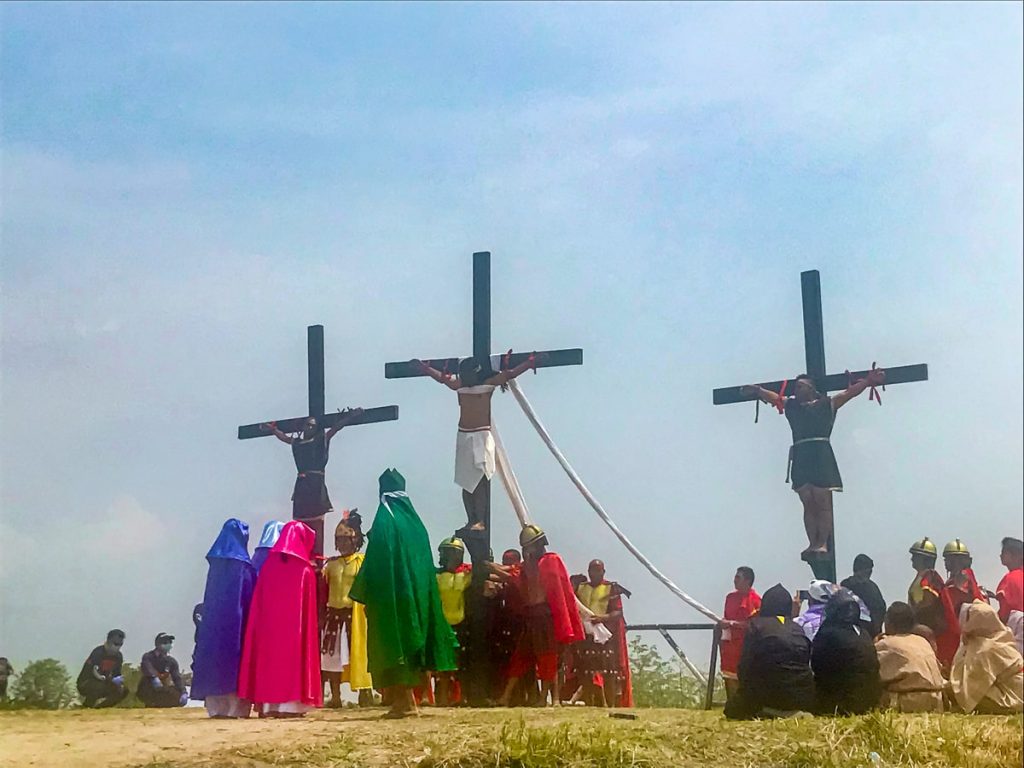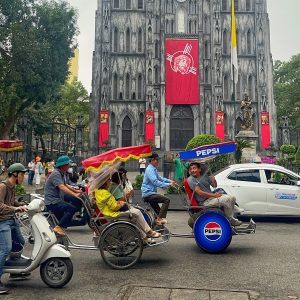Watching a crucifixion in the Philippines isn’t the first thing you think of when you imagine this friendly Southeast Asian archipelago.
With deep catholic traditions and an unapologetic religious conviction, it’s really no surprise that such a tradition should exist in the Philippines. Reenacting this famous biblical event for one of Christianity’s holiest days, I’m almost certain that you won’t experience an Easter like this anywhere else on the planet.
So what makes devotees go to such extreme lengths during the crucifixion, and is there more to this, than what looks like, on the surface, a graphic act of self-mutilation?
Let’s take a look at this modern phenomenon of crucifixion in the Philippines during the Easter period, and what it really feels like to witness such an archaic act in the modern-day.
Why Do They Perform Crucifixion in The Philippines?!
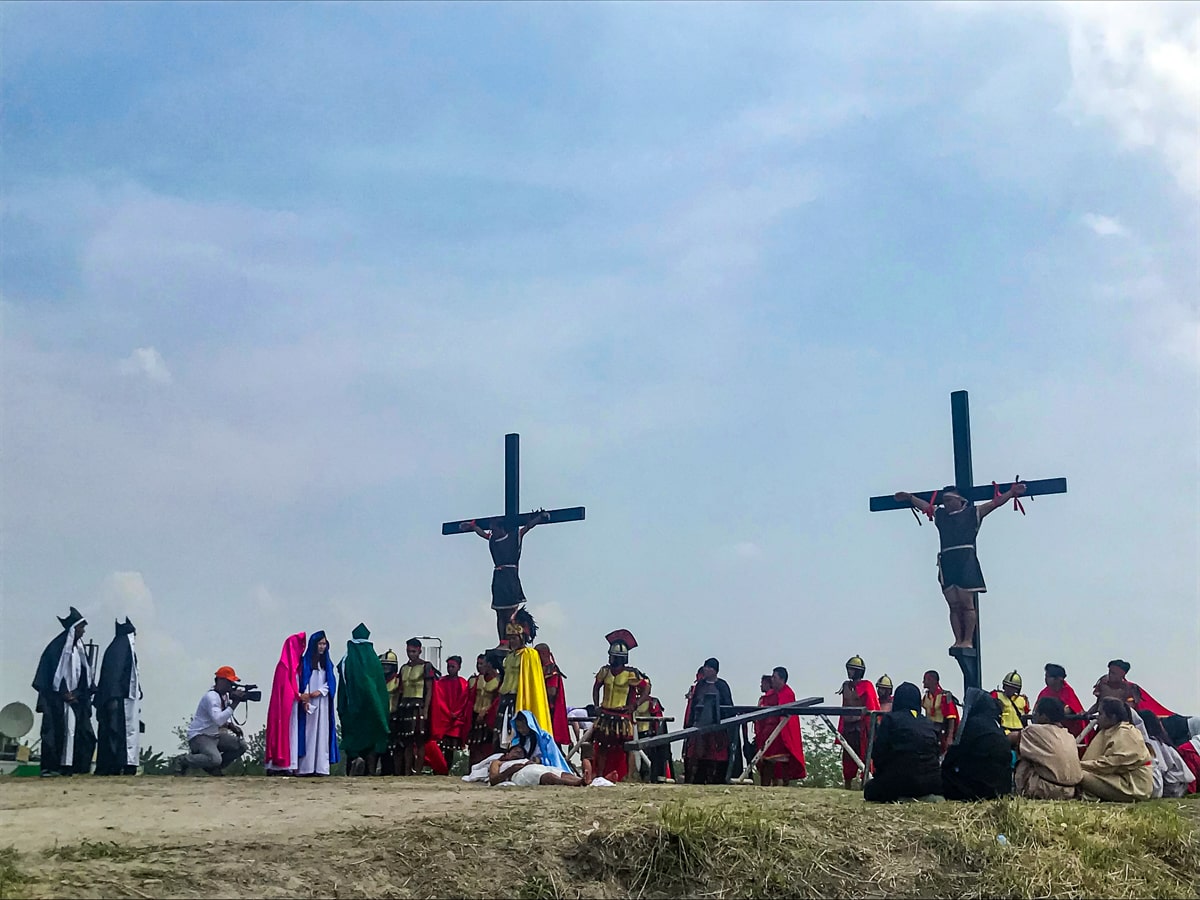
(Edit: For obvious reasons, the last 2 years’ rituals have been called off. I’ll update accordingly about crucifixion in the Philippines, just like I will with all festivals that I write about).
Brought to the Philippines during the 16th century, Catholic Christianity is the main religion in the nation, with 86% of the population classing themselves as Catholic. This makes the Philippines one of two predominantly Christian nations in all of Southeast Asia, and boy are they pious about it.
Filipinos are fiercely dedicated to their Catholic religion and hold religious festivities, such as Easter, in high regard.
Many Christian communities around the world reenact the passion of Christ, including playing key parts in the biblical epic, with cross-carrying and storytelling.
Crucifixion in the Philippines, however, takes it to a whole new level. This realism takes the form of nails through the hands and feet, self-flagellation and other graphic forms of self-harm.
This realistic reenactment of violence takes on a wholly spiritual level in the Philippines. To literally reenact the pain that Jesus felt during his crucifixion is said to create a connection between those carrying out the act and their religious saviour Jesus Christ.
These various acts of self-harm are seen as mortification of the flesh – exonerating your sins by causing yourself pain.
The act of harming yourself in a religious sense is not one unique to Christian festivals and can be seen across different religions and cultures. Whether this is in the Nine Emperor Gods Festival in Buddhist Thailand, or the Hindu Thaipusam Festival in Malaysia – the act of harm to the flesh, for the claim to a higher spiritual connection is not a unique one to the crucifixion in the Philippines.
Is The Crucifixion in The Philippines Voluntary or Punishment?

Unlike historical reasons for this punishment, crucifixion in the Philippines is said to be purely voluntary. As a deeply religious act, many offer themselves up as penitents for their own sins, believing that by allowing themselves to be crucified, they are absolved from any immoralities they may have committed, just as they believe Jesus died for humanity’s sins.
Many men and women volunteer each and every year and go through the entire process of being nailed to a cross, through the hands and feet, every easter. One such famous Filipino is Ruben Enaje. With 33 years’ worth of crucifixions behind him, he has voluntarily gone through the whole process every year from the 1980s right up to 2019.
Is The Philippines Crucifixion Real Or Fake?
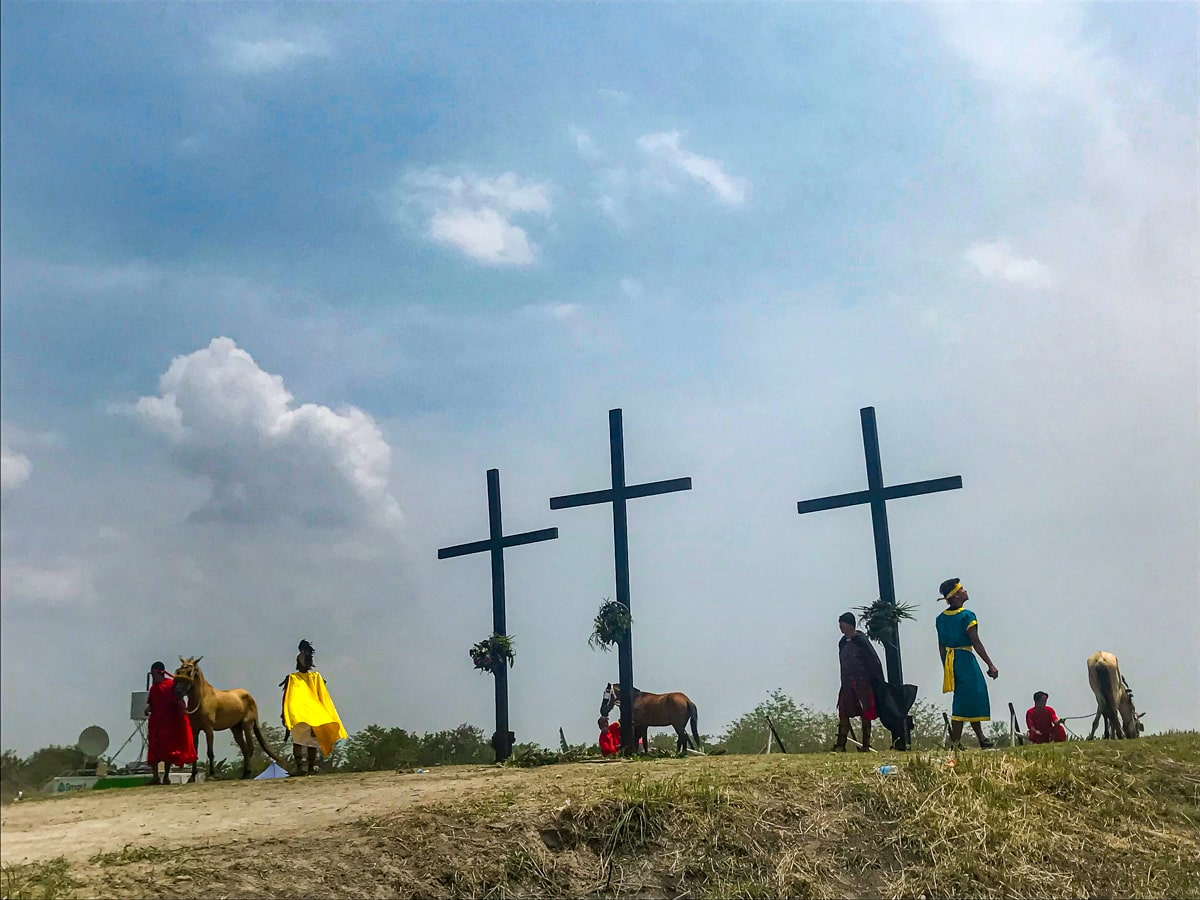
I’ll tell you now, there’s nothing fake about the Philippines crucifixion. I was “lucky” enough to have a media pass, and managed to get pretty close to some blood-curdling sights.
Crucifixion in the Philippines isn’t something to take lightly – this isn’t your average school nativity play; there is no fake blood and the nails penetrating the body are harrowingly real.
Although, unlike the historic Roman crucifixion, victims on the Filipino-built crosses are not left to die. Those who are playing the part of Jesus have four-inch nails, driven through their palms and feet, nailing them to the wooden cross.
The only thing that is “fake” is the ostentatious acting of Jesus, Pontius Pilate and the Romans. It’s staged to be a ceremony, to set the scene of what Christians believe happened to Jesus before and during his death.
Make no bones about it, theatrics aside; the crucifixion in the Philippines is 100% legitimate.
When is The Philippines Crucifixion?
The Philippines crucifixion takes place on Good Friday, the Friday before Easter Sunday which marks the day Jesus was crucified in Jerusalem. The week leading up to and after Good Friday and the Philippines crucifixion is also seen as a set of holy days within the Christian and Filipino calendars.
The Thursday before Good Friday is known as Maundy Thursday and celebrates the last supper and the washing of disciples’ feet, by Jesus on the eve of his crucifixion. Many will take part in a re-enactment of the Last Supper, which is usually organised by local churches.
The Saturday following Good Friday and the Philippines crucifixion is known as Black Saturday, or Holy Saturday and commemorates the day Jesus lay within the tomb. This Saturday after Good Friday is also treated as a public holiday in the Philippines.
Essentially, if you’re visiting the Philippines at any point within a two-week period of Easter, you’ll probably find some kind of celebration going on, so it’s worth planning ahead to see what is and isn’t open.
Where Exactly Does The Crucifixion Take Place in The Philippines?
While the majority of the country is practising Catholics and the Easter weekend is widely recognised across the Philippines, the main celebration and reenactment of the crucifixion in the Philippines take place in the province of Pampanga. This region is located on the island of Luzon, the country’s main island and also its biggest.
The actual crucifixion takes place in the tiny town of San Pedro Cutud, which sits within the larger city of San Fernando. Only forty-odd miles north of the Filipino capital of Manila, there are a number of ways of getting here from the capital, which I’ll get into in just a minute.
There are a few other areas within the country that put on similar rituals during the Easter weekend too. Displays in Bulacan province and Cebu City are also prevalent during this time, but all are pale in comparison to the extravagant, intense and well-attended displays in Pampanga province.
How To Get To Pampanga
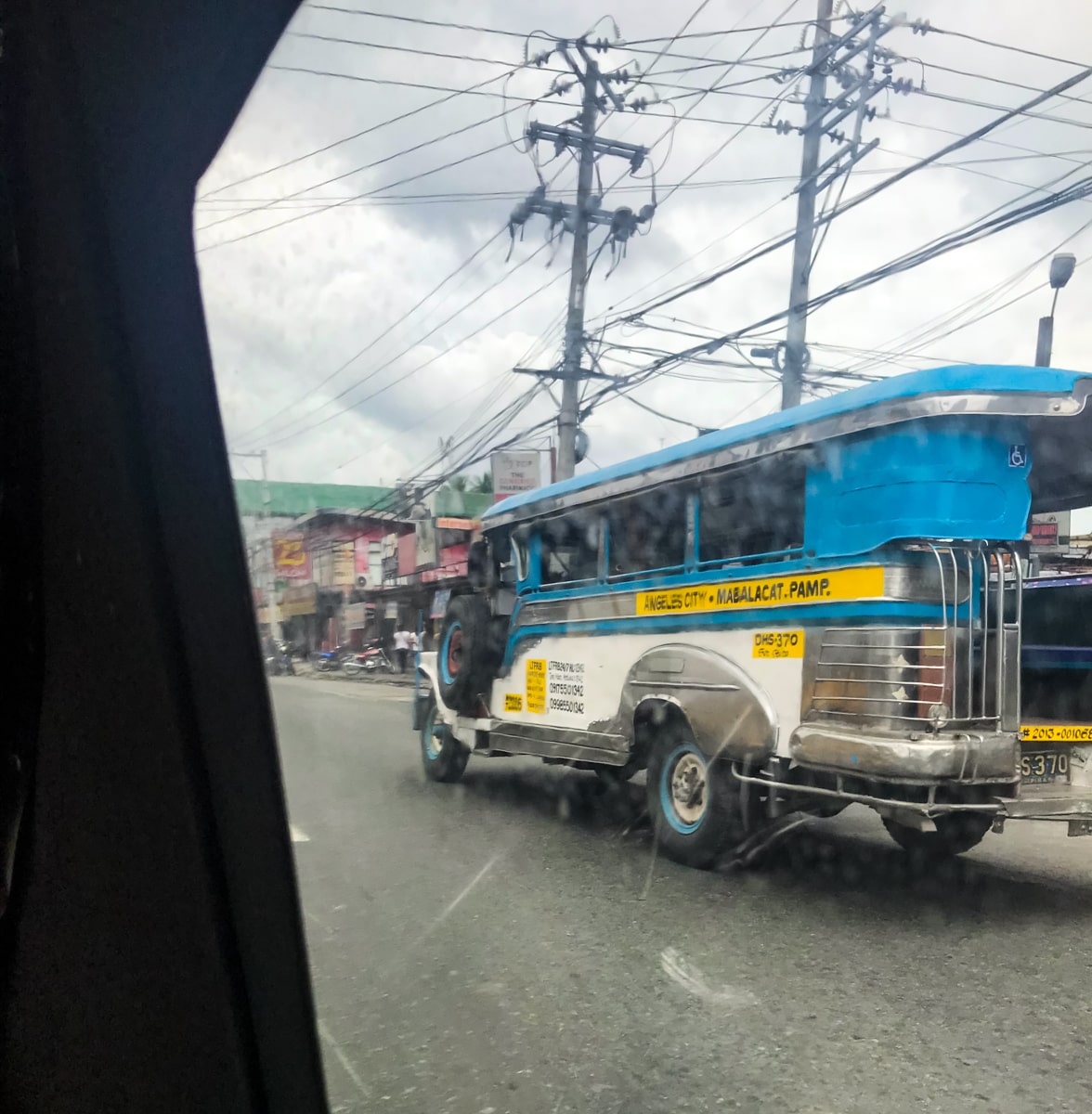
If you’re heading here from a nearby Southeast Asian country or travelling from another Filipino island, it’s easiest to fly into Clark International Airport, and then get a transfer to San Fernando. This will have you best placed to get to San Pedro Catud on the main day of the events.
Alternatively, if you’re travelling from a little further afield, head to Manila, where it’s an easy bus ride up to Pampanga and its coveted Philippines crucifixion. There’s no set timetable for buses, but they leave fairly regularly from Manila to Pampanga, taking around two and a half hours to get from A to B.
A one-way ticket will set you back around ₱200 – ₱250.
This is what I chose to do. I was living in Bangkok at the time and flew into Manilla via Bangkok (BKK) Airport with Thai Airways on a direct flight. I got what is known as a “chicken bus” up to Pampanga.
How To Get To San Pedro Cutud on Good Friday
Getting to Pampanga province isn’t enough to see the Philippines crucifixion, as the display takes place in the small city of San Pedro Cutud – this is more like a village than what we’ve come to expect from a city.
You can get to San Pedro Cutud by joining a tour, or by arranging a few things off your own back.
When you join a tour, they’ll do everything for you, from picking you up from your hotel in San Fernando to organising the whole day’s itinerary.
If like me, you’re getting there yourself, you can take a 20-minute Jeepney directly to Barangay San Pedro Cutud for around ₱150. Once you reach the entrance to San Pedro Cutud, it will be a few kilometres walk before you arrive at the crucifixion site.
I gave myself a few days in a hotel to gather my bearings first in Angeles City, before getting a paid taxi to San Pedro Cutud.
Angeles is so, so so, so sleazy, it makes Pattaya look like The Garden of Eden.
Other Countries That Reenact Jesus’ Crucifixion
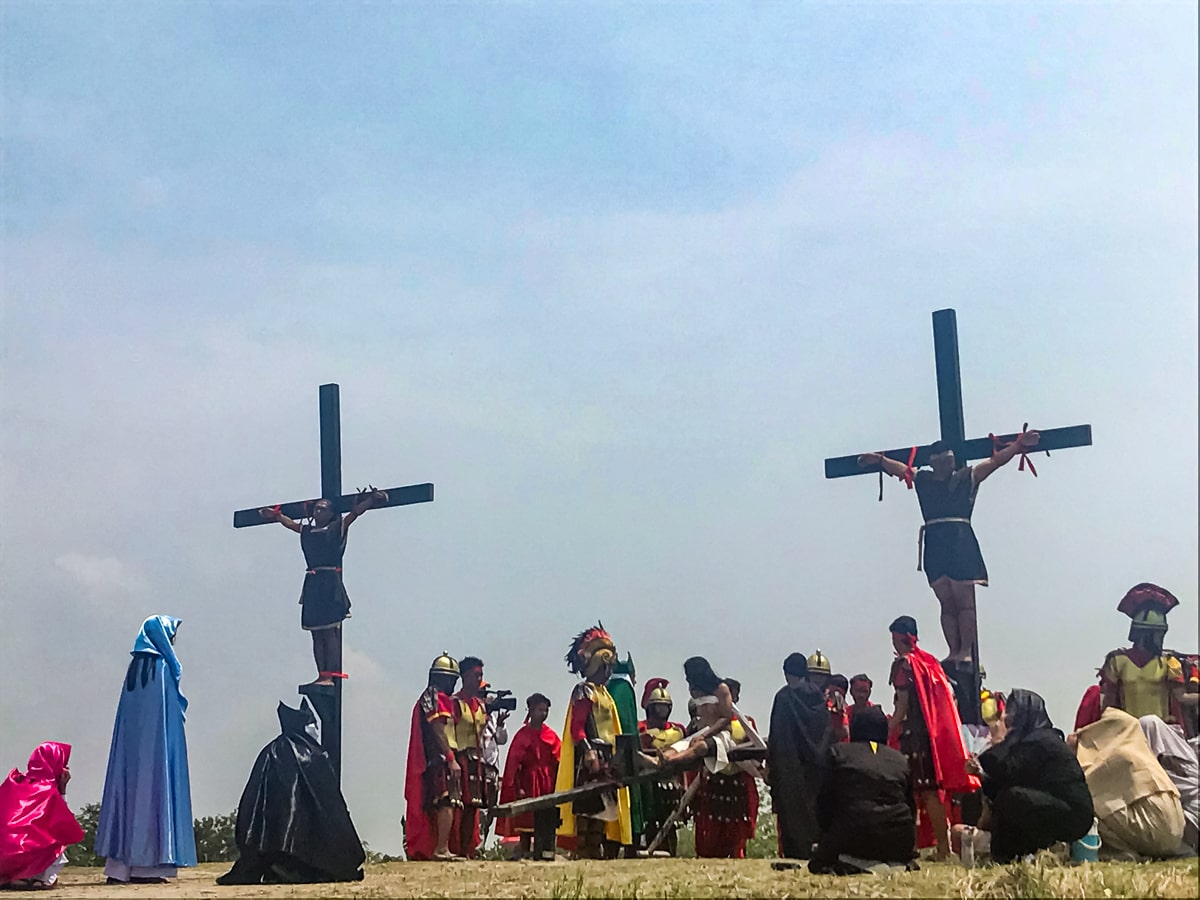
Reenacting the crucifixion isn’t something that is solely reserved for the people of the Philippines, although there is a Latin connection with all countries involved. Mexico City famously hosts a passion play every year, reenacting the moment Christianity’s saviour was put to death – a tradition that has gone on for nearly 200 years.
Neighbouring nation Guatemala also hosts its own Holy Week processions, reenacting the passion, including cross-bearing, blood and intense worship.
There is one thing that connects other countries to the crucifixion in the Philippines and that is its Latin and Romanesque lineage. Roman Catholicism seems to have run a more direct and literal course through Spanish conquistadors and overall Hispanic tradition.
Whether it be the smells and bells of the Catholic church, the pomp and ceremony of stained glass over the top liturgies, or even the excessive use of the first name Jesus for your son, in the Hispanic world – the crucifixion seems to take on more of a literal meaning, and the reenactment of the event is just as streamlined as Christmas morning is in the Anglican world.
How Does The Catholic Church Feel About Crucifixion?
Generally speaking, the rhetoric from the Vatican and the Catholic church is against such dramatic displays of Christ’s crucifixion but they have done little to stop it on any official level.
The official Catholic representative in the Philippines, Father Jerome Secillano of the Catholic Bishops’ Conference of the Philippines, went on record to even say, “Holy Week is not the time to showcase man’s propensity for entertainment and Pharisaical tendencies.”
This quote alone shows that the Catholic Church sees such demonstrations as more of a masochistic display of shock entertainment than it does a genuine display of Christian devotion.
That being said, such displays are interwoven with the culture and tradition of places such as Pampanga and it would be hard to govern/abolish this act. There’s also the point that the man himself, Jesus, spoke of the concept of “free will,” for better or worse.
“Healthy & Safe”: Sanitary and Sanity Claims By Local Authorities
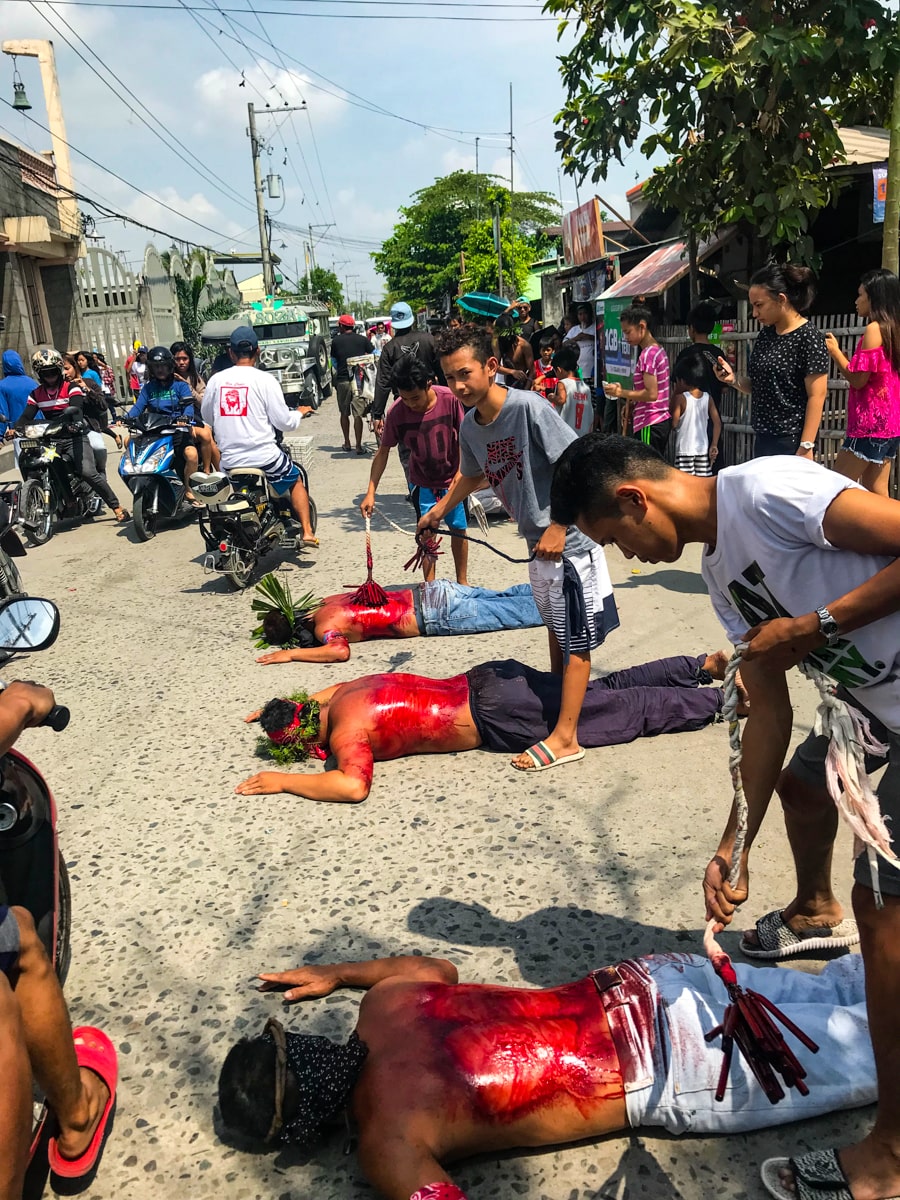
To our pampered Western eyes, the hammering of four-inch nails into a hand may seem a little too violent. But what about the sanitation of the crucifixion?
Local authorities claim that the whole thing is fine because they sterilise the nails and those on the cross have medical attention after.
And yes, maybe we can draw some sort of sanitary relief from this – it’s not your average rusty nail being hammered into the hand of a would-be Jesus.
On the other hand, I’d hate for you to go away with an unfounded view of how clean and careful crucifixion in the Philippines really is because it’s not for the faint-hearted. I certainly won’t be adding it to any of my personal challenges.
But with local legends such as Ruben Enaje nailing himself to the cross for 33 long years, it’s not quite the Roman death sentence it once was.
Self-Flagellation in The Streets of Pampanga: A (Less?) Hardcore Option For Locals
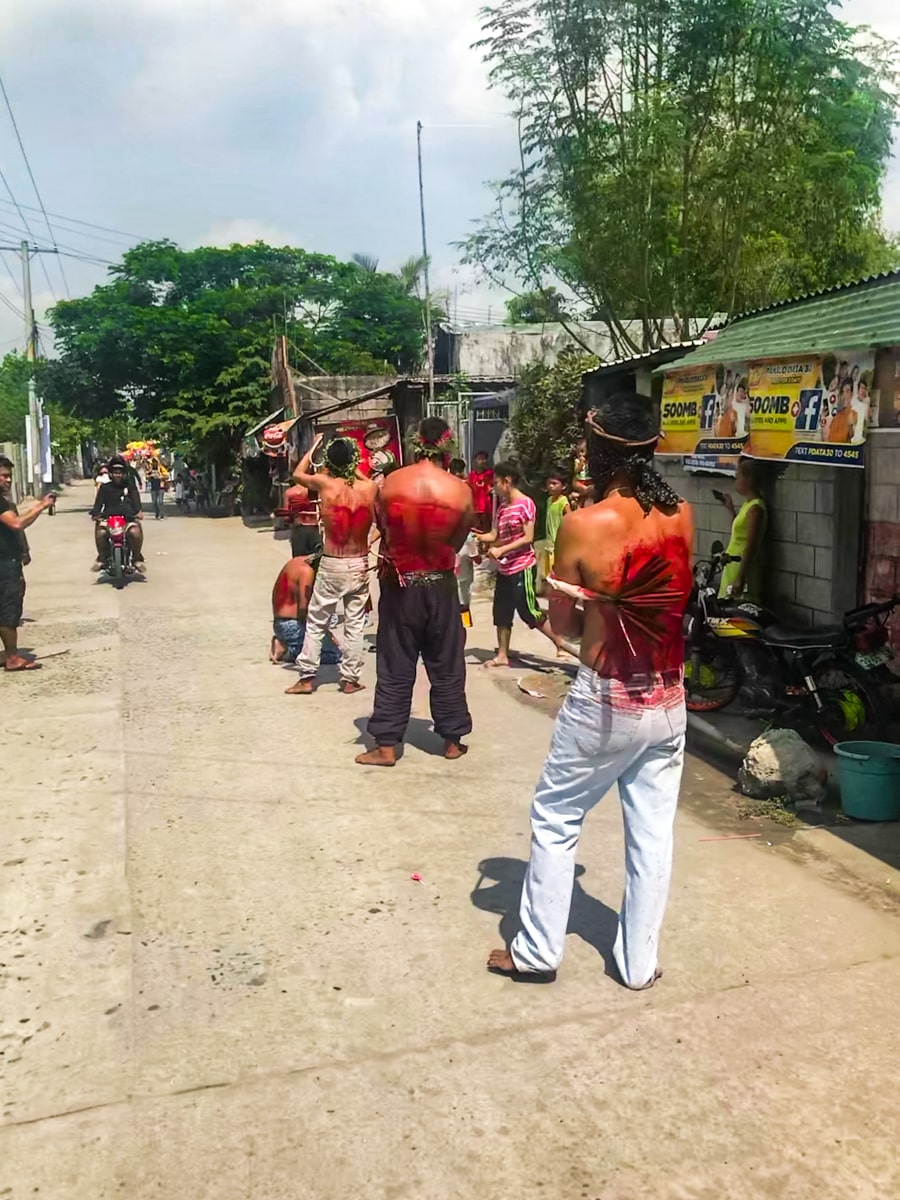
Although the ‘star of the show’ is the literal crucifixion of the would-be Jesus on the cross, this isn’t the be-all and end-all of Holy Week and crucifixion in the Philippines. As you make your way to the hill representing the Calvary, there will be a multitude of men carrying out self-flagellation.
This is the act of whipping yourself to the point of breaking the skin and drawing blood. Although this may seem a little less violent than being nailed to the cross, the splash of blood on both streets and onlookers is not uncommon.
Saying that many of the people attending the crucifixion are just onlookers; devout Catholics that are bearing witness to the event to remember Jesus Christ himself.
Is Martyrdom Free Will or Predetermined?
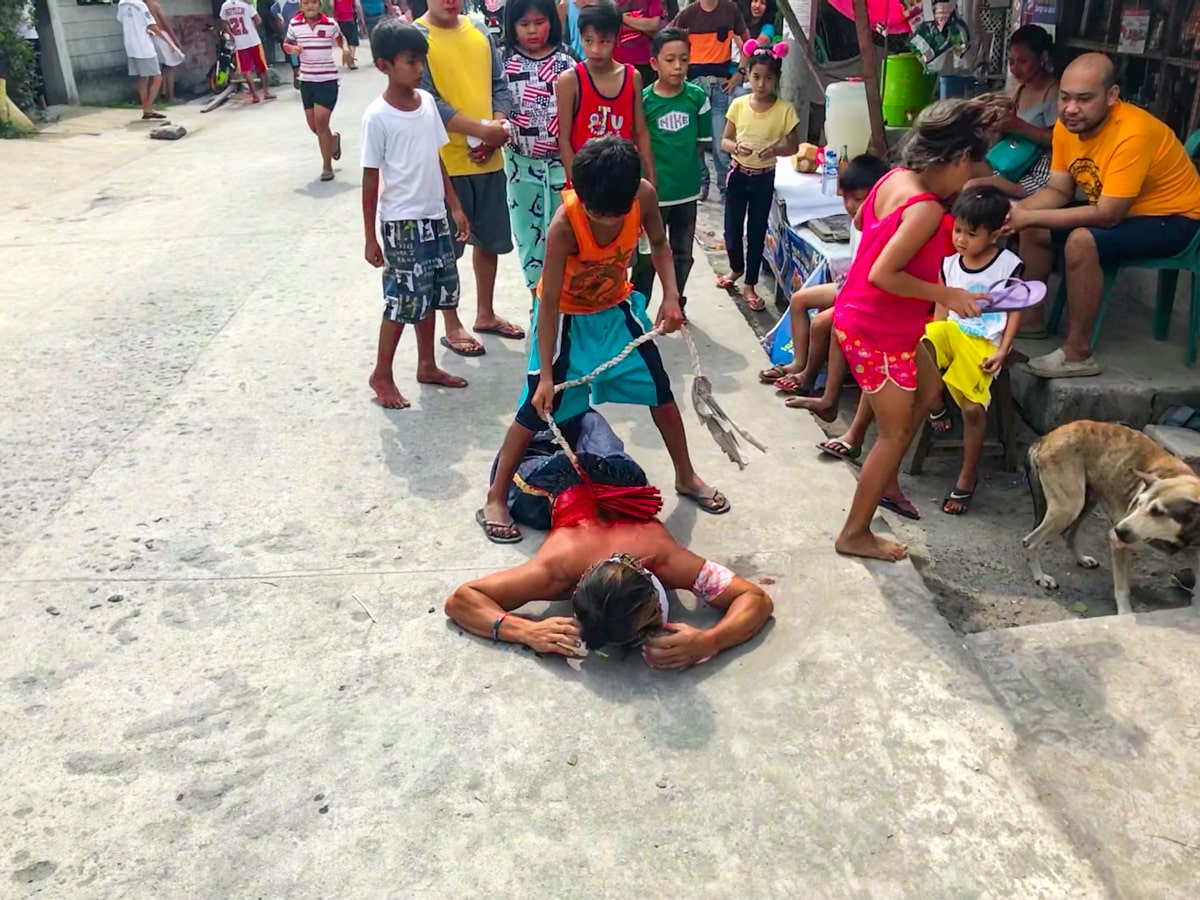
The idea of any of us willingly allowing ourselves to be nailed flesh and bone against a piece of wood seems like the edge of madness, and maybe so.
To many others, it’s the highest form of predetermined martyrdom; allowing yourself to enter a divine and meditative state. All of this could maybe be taken at face value if there was a vetting system that took on board the idea of family pressures, ‘readiness’ and even the question of mental health.
This tradition of crucifixion in the Philippines has lasted for many years and generations, and it makes you wonder whether some may take part due to pressure from family, friends or because of an unhealthy state of mind.
The draw of gaining notoriety has begun to overshadow the religious aspect, meaning that those who undergo such torturous conditions may do so against their own better judgement, or worse, against their own free will.
Also Read: Worst Holi Ever? (Frustrating Experience During The Festival of Colours).
The Stories Behind The Crucified Filipinos of Pampanga
The tradition of the crucifixion in the Philippines is much more than a tourist spectacle. Many of the devotees who participate in the day’s events have their own reasons for taking part.
“We provide assistance because we can’t stop the influx of tourists,” a local event organiser said. “We don’t promote it as a festival but it’s rather a show of respect to a local tradition.”
Famous ‘Jesus’ Ruben Enaje has undergone the Philippines Crucifixion for over three decades and states that; “The only thing in my mind is that God went through worse.”
The same martyr acting out this reenacted crucifixion once said that he was undergoing the ordeal as a sign of defiance against world terrorism in his late 20 teens, dedicating the crucifixion “to peace in Belgium and other countries targeted by Islamic extremists.“
The national news of the Philippines once spoke to the Catholic church on the ground and quoted them as saying the ritual is categorised as such: “The gory spectacle reflects the Philippines’ unique brand of Catholicism, which merges church traditions with folk superstitions. Many of the mostly impoverished penitents undergo the ritual to atone for sins, pray for the sick or for a better life, and to give thanks for what they believe were God-given miracles.”
Crucifixion in The Philippines: My (Extreme) Easter Experience
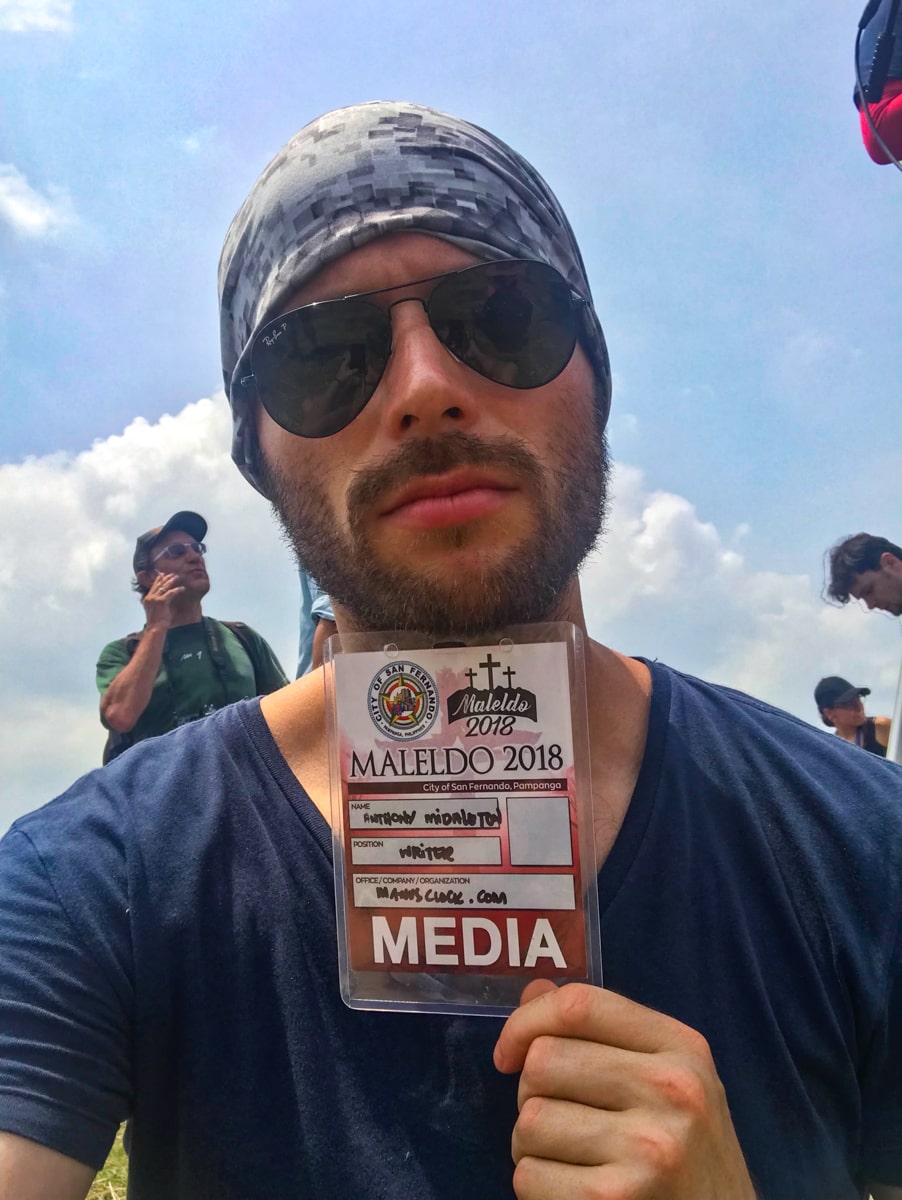
Asking a close member of staff of the Mayor of Pampanga for a front seat pass, to watch multiple crucifixions may seem somewhat cold-blooded, but I have an unquenchable thirst for the non-filtered truth, and I was a man on a mission to witness it with my naked eyes.
My humble little travel blog passed the test after a friendly yet formal interview and I was given my media pass for a grandstand viewing of the infamous crucifixion in the Philippines.
It’s hard to retroactively pin down the emotions that I felt. I believe I have a relatively strong stomach after working in the care industry for 5 years, but every man has their limits and I had a feeling that I was about to reach mine.
Speaking of blood, en route to my interview I had to navigate the streets of Pampanga’s fiercest Christian ceremony, with young lads in their 20s either carrying giant wooden crosses or whipping themselves (and also allowing others to whip them) with long ropes containing razor blades.
Blood poured down from their backs and (for the sake of honesty) occasionally sprayed out into passers-by who got too close for comfort.
Thanks to the aforementioned Thaipusam Festival and Nine Emperor Gods Festival, this was not my first rodeo, in terms of deeply religious people self-harming in the name of their deity.
Maybe it’s because I was full of sensory overload (which is typical for me) but I was shocked to read later that over 50,000 attendees visited the crucifixion in the Philippines. Back in England, I would pay weekly visits to watch my football team, Newcastle, with an average attendance of 52,000 – that place felt like a gladiatorial arena in comparison.
However, I think with me being closer to the event, things felt distorted somewhat.
I was at the front of the audience, completely exposed to the hot and humid Philippines burning heat, with 3 giant wooden crosses at 2 o’clock, roughly 20 metres away.
The theatrics started after what seemed like the longest hour of my life, with shirtless men walking towards the featured crosses, punishing themselves further with the bladed ropes, blood gushing down their bodies.
Shortly after, 3 men acting out the role of Jesus were manhandled by the acting Romans, walking the trio to their brutal act of penance.
The fervent crowd gasped loudly as if they were witnessing the actual biblical scene itself.
There was no more acting once they were placed on the cross and tied up…knock, knock WALLOP. Each participant yelled out in agony as the nails went in, especially through the feet.
The crowd shouted “Amen” and other biblical references as the three, rather impressively, stayed there for the whole 15 minutes with barely a murmur.
Once those 3 were taken down, the main man of the event presented himself – Mr Ruben Enaje, for the 34th crucifixion of his life. Ruben is somewhat of a local celebrity and his presence added to the intensity of the crowd.
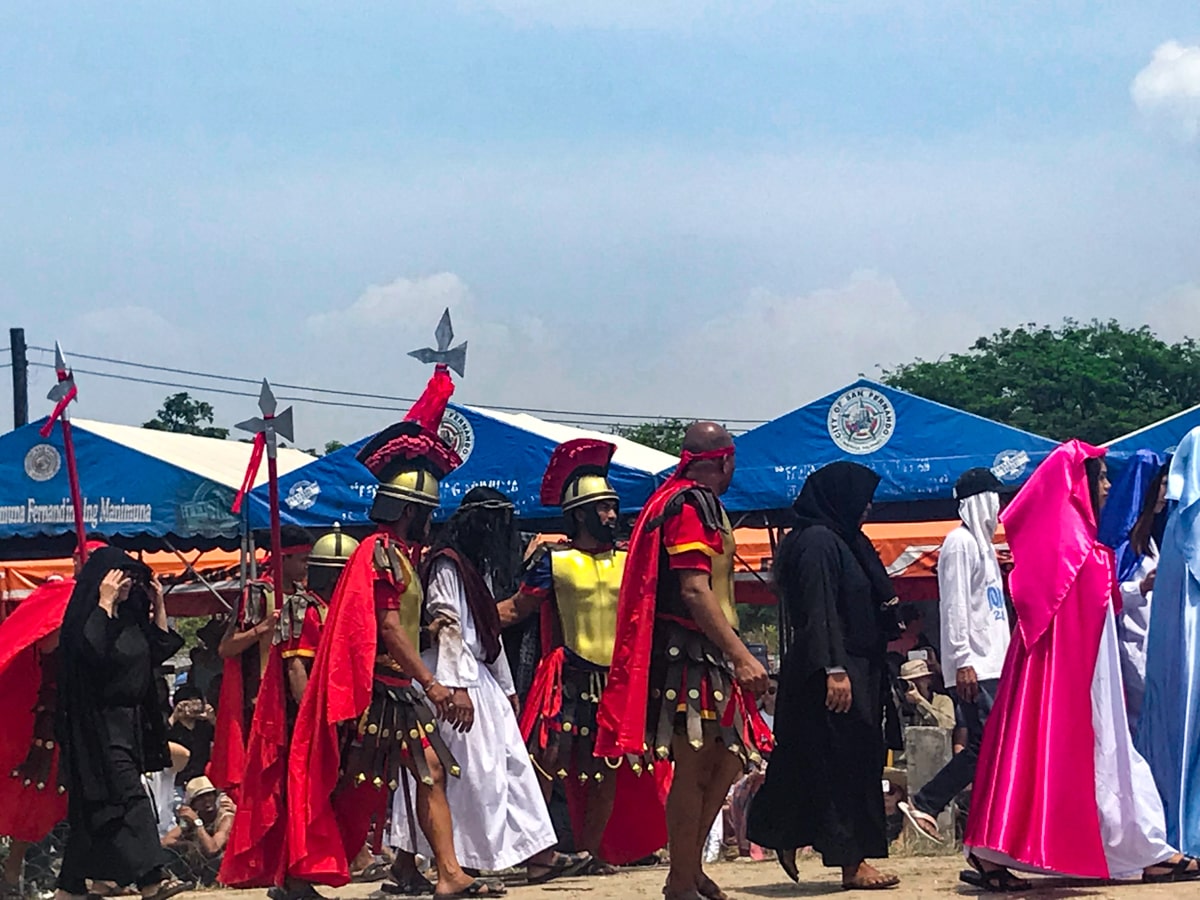
Much like a superior substitution in a football match, you could feel the expectation level rise in the crowd…and Ruben did not disappoint.
A much more charismatic and energetic performance from Ruben added to the palpable intensity already in the air. The 2 guys on the side of him, in the central cross, were not nailed in and were only there for visual purposes.
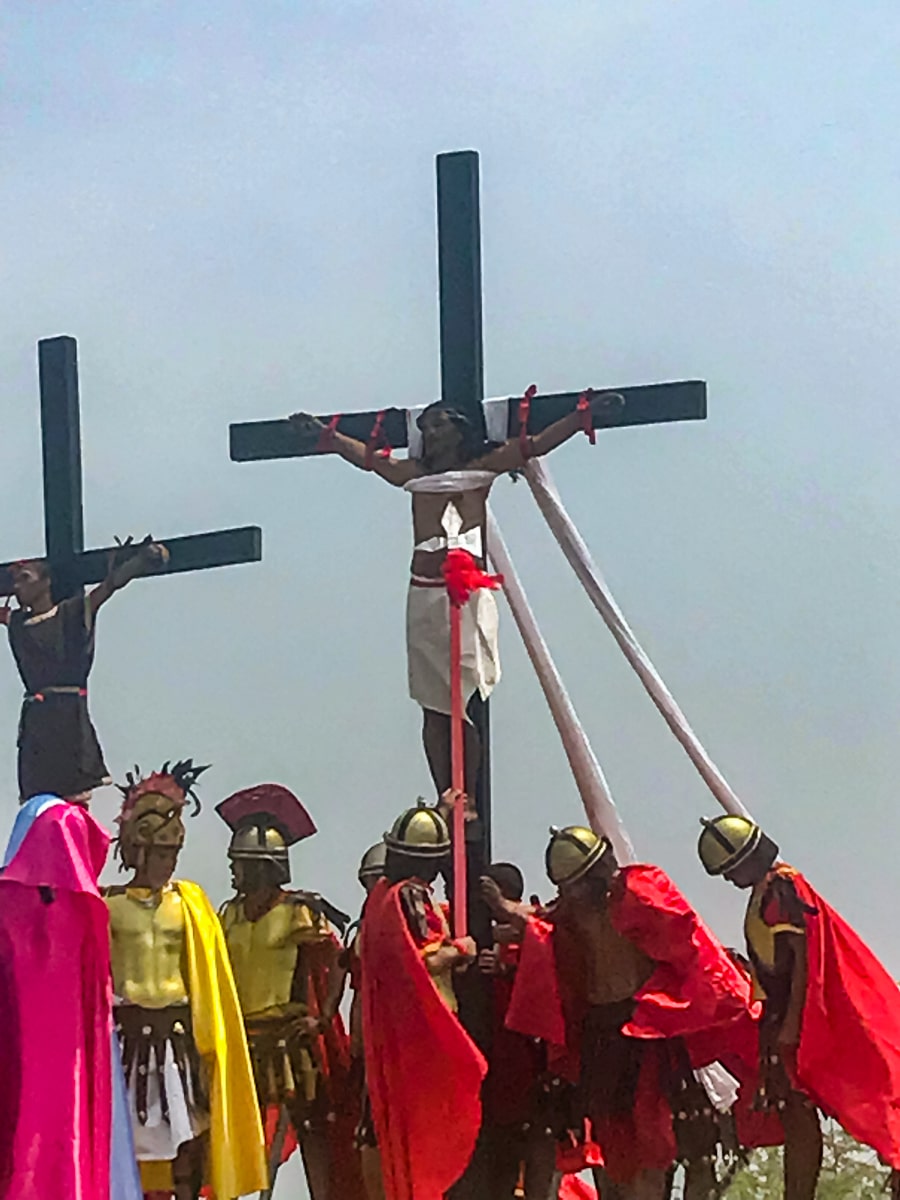
What startled me was the lack of reaction from Ruben when the nails went in this time. Either his cartridges have lost sensitivity from the 33 prior crucifixions in the Philippines that he’s endured, or he’s the toughest bastard in the nation (condolences to Manny Pacquiao).
Barely a squint showed on the face of the man as the nails pierced his flesh and bones and for 15 minutes on the crucifix.
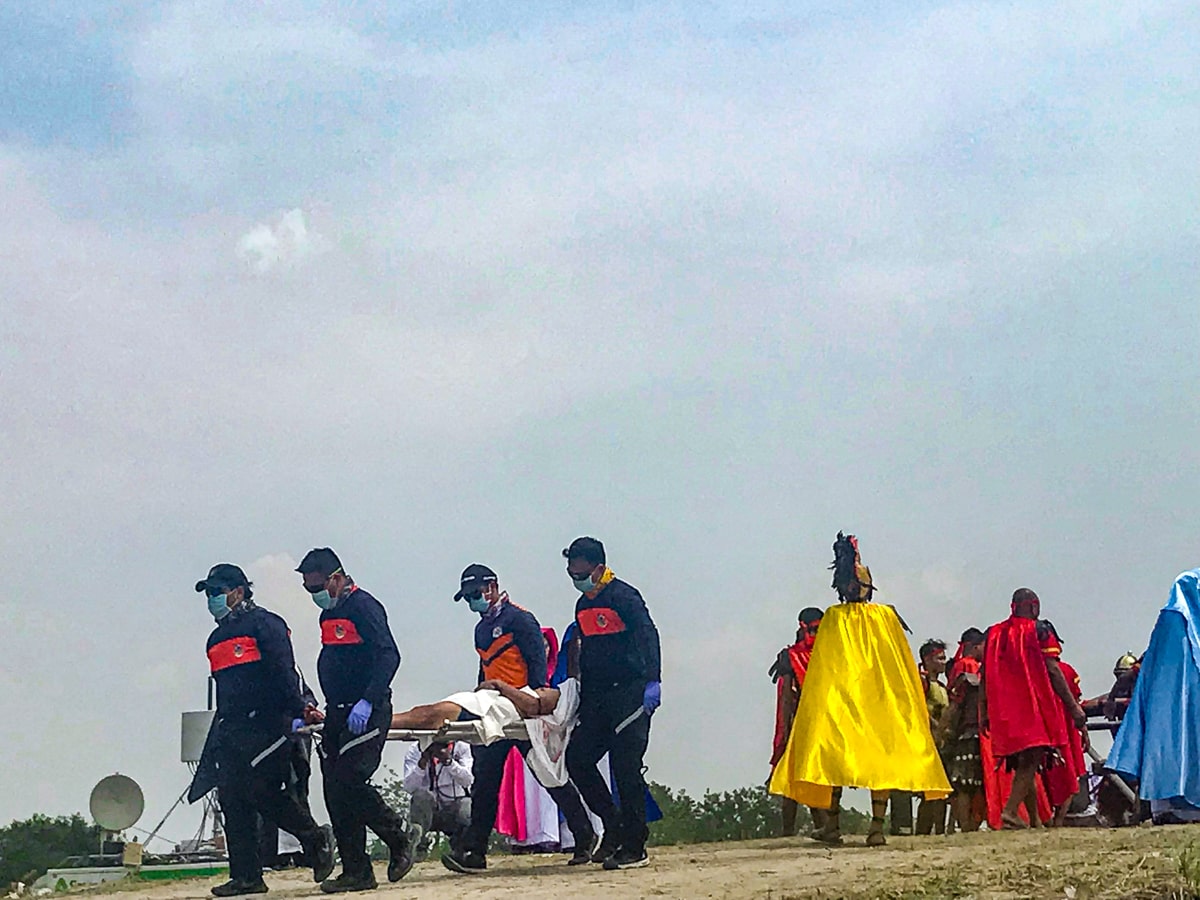
30 minutes later, I was sitting in a white tent during a press conference with the participants. Keeping with the theme of football analogies, it was exactly like that. Local journalists and the participants chatted casually about the event in a matter-of-fact manner, with the reassurance that medical treatment had been carried out successfully.
The crucifixion in the Philippines is certainly one of the wildest things that I have seen on my travels. Next Easter though, I think I’ll just stick to the usual tradition of gorging on chocolate eggs.

